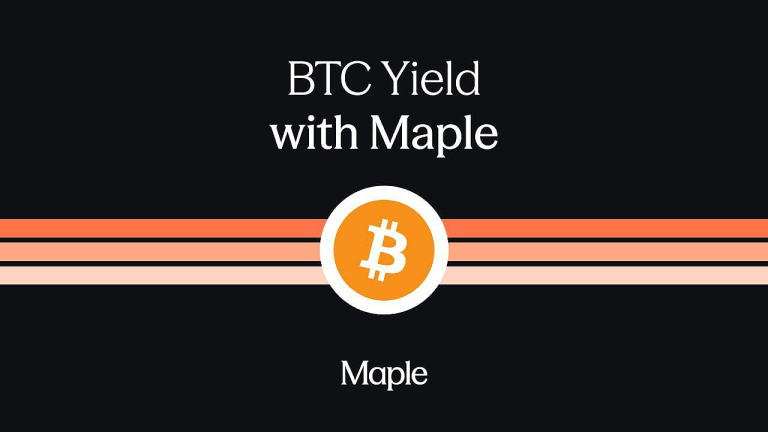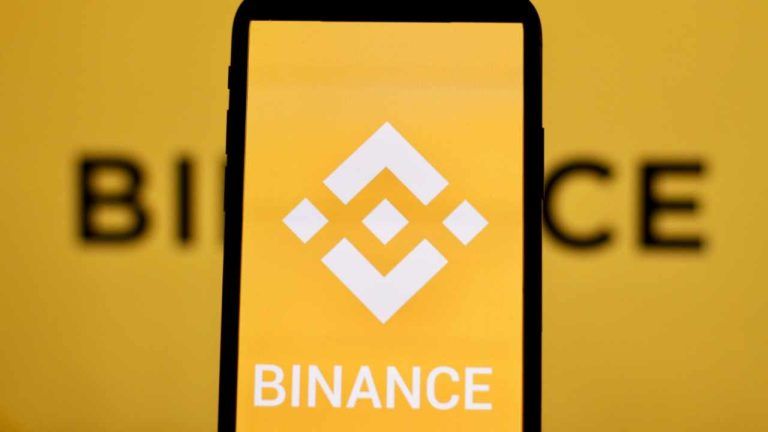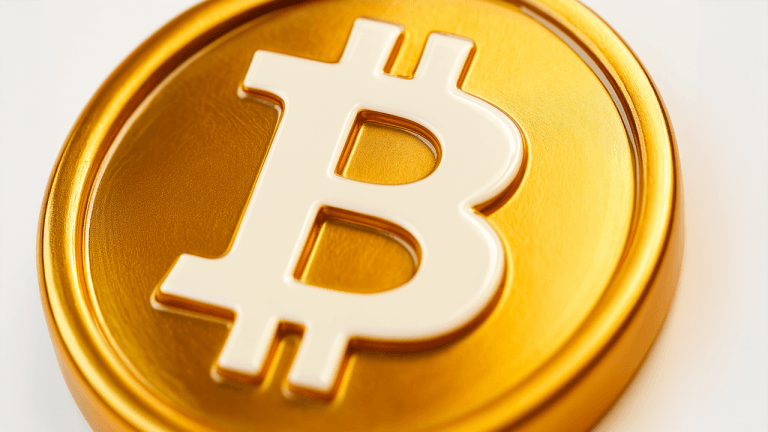"Stablecoins? We talked about them before." Yes, but let's get a quick reminder of what they are :
Stablecoins are important in crypto. They're like digital dollars that don't change in value much. As more people use crypto, stablecoins are in demand. They're reliable for moving money globally. We talked about Tether (USDT) and Maker's Dai (DAI) before John. Now, we'll see their issues and learn about other stablecoins. Got it?
"Ok, let's go." That's the spirit.
"Let's talk about the centralized stablecoin first." Ok Johny, USDT it is :
Tether (USDT) is a stablecoin that's been around since 2015. It's like digital dollars, and it's the biggest stablecoin.
USDT keeps its value at $1 by keeping an equal amount of real money (like dollars) in reserve. It's a bit like how dollars used to be backed by gold.
But here's the issue: USDT's way of creating coins isn't very clear. Some folks in the crypto world doubt if they have as much money as they say. There have been investigations, fines, and controversies around Tether's practices.
So, USDT's legitimacy is still up in the air, even though some recent events have made it look more trustworthy.
"And now my favourite decentralized stablecoin please!" Are you the biggest fan for DAI or what :
DAI is like a special cryptocurrency created by a system called Maker. It's a bit like a digital "Central Bank." People make DAI by putting other cryptocurrencies (usually ETH) into Maker's system.
But here's the catch: you have to put in a lot more value than the DAI you want to make. This is to make sure everything stays safe, even if the value of the cryptocurrencies you put in drops a lot.
Maker tries to control how much DAI there is by changing how much it costs to borrow and use it. But this way isn't very good at handling a lot of demand, and sometimes the price of DAI goes above $1 because there isn't enough of it.
Maker has tried to fix this problem, but DAI's popularity still mostly depends on how much people want to borrow, not how much they want a stable cryptocurrency.
"How should we resolve the stablecoin issue?" That's quite the challenge and here is what I mean by that :
Stablecoins like Tether and DAI have their own problems. The big challenge is finding a way to create a stable cryptocurrency that doesn't rely on a single powerful entity and can keep its value steady.
Centralized stablecoins are effective but require trusting a central authority, which can be risky. DAI is somewhat decentralized but not very efficient with capital, and it struggles to meet the growing demand.
To tackle these issues, some new types of stablecoins have appeared John. They're called "algorithmic stablecoins," and they aim to be more decentralized, maintain a stable value, and use capital more efficiently.
"And what are those? Math equations?" Haha John, you are right like 50% :
Algorithmic stablecoins are like cryptocurrencies managed by computer programs instead of humans. They aim to keep their value stable, often pegged to the US Dollar. Some of them, called algorithmic stableassets, don't exactly function as currencies but rather as a form of collateral.
There are two main types of algorithmic stablecoins:
- Those without collateral, like ESD, AMPL, and BAC.
- Those partially or fully backed by their own native tokens, like FRAX and sUSD. These are considered algorithmic stablecoins.
This distinction matters because when a stablecoin relies on its own native tokens as collateral, it creates a kind of circular value that needs algorithms to keep the price stable.
Algorithmic stablecoins can be divided into sub-categories, with the main ones being rebase and seigniorage models. These sub-categories determine how they manage and control their value.
"Rebase model? What do you mean by that?" Here is your answer John :
A rebase model keeps a stablecoin's price on track by adjusting its total supply. If the price goes above or below the desired value, the protocol automatically increases or decreases the number of coins held by everyone.
The idea here is that changing the supply can help control the price, similar to how regular money works when there's more or less of it. The first protocol to use this method was Ampleforth (AMPL), and it's been around since 2019.
"Tell me more about how Ampleforth operates." Sure thing fellow crypto bro :
Ampleforth (AMPL) does something interesting every day to keep its price close to $1.31. If the price goes more than 5% above $1, it creates more AMPL coins in everyone's wallets. If it goes more than 5% below $1, it takes away some coins.
But here's the key: Everyone's share of AMPL stays the same, so it's like cutting a pizza into more or fewer slices to keep the portions about the same size. This process doesn't dilute anyone's holdings.
Because these adjustments happen at set times, some people try to time their trades to make the most of it by buying or selling AMPL just before the adjustments happen.
"Seigniorage Model? It sounds like a car name bro." It might have an interesting name, but trust me, it is not that hard to understand it :
Seigniorage models use a reward system to control the price of a stablecoin. If the price goes above the target, the system makes new tokens and rewards people who provide liquidity or stake tokens. If the price drops below the target, it stops making new tokens and introduces ways to reduce the supply. Users can buy coupons that remove tokens from circulation, and they can exchange these coupons for more tokens later, but only when the price goes back to or above the target.
There are three main versions of this model:
- Empty Set Dollar (ESD): It has only one token that acts as both a stablecoin and a governance token. If the price is above $1, it rewards stakers and liquidity providers. If it's below $1, it stops rewards. During a low-price phase, users can buy coupons with their ESD, but these coupons expire after 30 days.
- Basis Cash: This model has two tokens, one is the stablecoin (BAC), and the other is the share token (BAS). It also uses a price mechanism to control the supply of BAC. When the price is above $1, it rewards BAS stakers. When it's below $1, it stops rewards and offers Basis Bonds (similar to ESD coupons) for purchase. These bonds can be redeemed for BAC when the price goes up.
- Frax Finance: Frax uses a fractional collateralization approach. Its stablecoin (FRAX) is backed by two types of collateral: a centralized stablecoin (USDC) and its native token (FXS). The collateral ratio is adjustable based on a growth ratio. When FRAX is above $1, the collateral ratio decreases, and when it's below $1, the ratio increases. This system encourages arbitrage to keep the price close to $1. FXS holders also get a share of the protocol's profits.
Each of these models has its own way of maintaining the stablecoin's peg to its target price.
"And what's their evolution so far?" Here is your answer John :
Algorithmic stablecoins, especially those using the seigniorage model, were all the rage in late 2020. These coins were designed to maintain a stable value like the US Dollar, but most of them failed to do so.
Out of the top algorithmic stablecoins by market value, only sUSD and FRAX have consistently stayed close to their target value. (late 2021 INFO)
The problem with these new coins is that they tried to replicate what centralized governments do with regular money but in a highly competitive and decentralized crypto world. It's like they wanted to build a new kind of money overnight.
To attract users, these coins offered really high rewards for people who provided liquidity, but that mostly attracted speculators who wanted to make a quick profit. They would jump from one new coin to another, leaving latecomers with big losses.
This rollercoaster ride caused wild price swings, and these coins are mostly traded on platforms like Uniswap, which made the swings even worse. When prices dropped, people didn't want to provide liquidity because they were afraid of losing money, making things even more volatile.
In short, while algorithmic stablecoins sounded cool, they ended up being a risky and unstable game that left many people confused and frustrated.
"And for an example, why has FRAX succeeded?" Here is why :
FRAX has done well at keeping its value close to $1, unlike many other stablecoins. Here's why I think it's been successful:
- FRAX is partly backed by USDC, which makes people trust it more to stay at $1. As of May 8, 2021, 85.25% of FRAX is supported by USDC.
- FRAX can adjust how much collateral it needs, so it can meet the demand to stay at $1.
- They use the collateral to earn money elsewhere, which helps the system and lets them buy and remove FXS tokens, which can reduce price swings.
- If FRAX's price goes up or down, it's not as big of a deal because they have a way to manage it with FXS tokens.
"Is this all for today?" No John, got some more info for you :
FRAX has done well, but some people say it's not completely decentralized because it still depends on USDC, which is backed by a centralized group (CENTRE Consortium with Coinbase and Circle).
Now, there are new players in the game. They still use collateral, but they have their unique approaches, making it hard to call them regular algorithmic stablecoins. I will talk about three of them.
"Well, let's hear it boss." Sure, the first one is Fei :
Fei Protocol is a new kid on the block that aims to keep its stablecoin (FEI) pegged to $1. Unlike regular stablecoins, it's not backed by cash or USDC; instead, it's backed by Ethereum (ETH).
Here's how it works: When FEI's price is above $1, people can create new FEI by using their ETH. This makes FEI cheaper. Traders can then buy FEI and sell it until it reaches $1 again. When FEI's price is below $1, the protocol taxes sellers and rewards buyers to bring it back to $1.
In emergencies, if FEI's price stays low, Fei can use its ETH reserves to buy FEI from the market and boost its price. They also have a token called TRIBE for governance decisions.
Fei tries to keep its stablecoin stable in a unique way, and it's different from other stablecoins like Frax or DAI.
"Ok, go on." Ok John, here is the second candidate :
Reflexer's RAI isn't your typical stablecoin. It's designed to be a stable form of collateral, unlike volatile assets like ETH or BTC. RAI doesn't have a fixed price; it aims to hover around a certain value, initially set at $3.14.
RAI works a bit like how central banks operate in the real world. To create RAI, users need to deposit ETH as collateral, making sure they have at least 145% of the collateral value. They pay a small fee (2% per year) for this. If RAI's price goes above its target, it gets easier to create more RAI. When it's below the target, it becomes more expensive to create RAI.
In emergencies, the system allows users to redeem their ETH collateral at the current price.
Reflexer also has another token called FLX, which plays a role in governing the system and offers protection. Debt auctions help manage the system and remove bad debt. Over time, FLX aims to become more automated and require less governance.
The last one is pretty interesting regarding it's price and you will see why :
Float Protocol is similar to FRAX but has some differences. It uses two tokens, FLOAT and BANK, and is partly backed by ETH. FLOAT's price is not fixed; it's designed to stay around $1.61 initially.
To get FLOAT, you participate in a Dutch auction, where prices start high and go down. You use both BANK and ETH to buy FLOAT. The more people want FLOAT, the more ETH you need.
When FLOAT's price is above the target, anyone can start an auction to sell new FLOAT. This auction starts with a higher price and gradually goes down until it reaches the target.
When FLOAT's price is below the target, the protocol buys FLOAT from the market through a reverse Dutch auction. It offers to buy FLOAT at different prices with both ETH and newly created BANK tokens.
Float Protocol initially had a 100% collateral ratio, but this can change through governance voting. In emergencies, the assets in the protocol's basket can be used to support FLOAT's price if it falls below its target.
"And how do you think that those will fare?" Always DYOR. Now, to answer your question :
The new algorithmic stablecoins and stableassets like FLOAT and RAI are taking a more cautious approach compared to older ones. They prioritize having enough collateral to back their value over being super efficient.
For example, Fei uses a system where collateral automatically goes into Uniswap pools, and users can control how much collateral there should be through voting. Float also lets market forces determine the ideal collateral level and has a flexible peg, making it less rigid.
On the other hand, Reflexer's RAI is overcollateralized and has no maximum limit on collateral, which makes it less prone to sudden crashes. RAI doesn't stick to a fixed peg, giving it more flexibility.
These new assets encourage certain behaviors in the market. They reward users when the price is above the peg, but they also discourage certain actions when the price is below it. For example, Fei penalizes sellers when FEI is sold below the peg, while Float lets market dynamics decide the outcome.
These protocols also have emergency measures in place. When their native assets lose significant value, they take actions to protect their markets. Fei and Float, for instance, cut off liquidity and use their assets to stabilize their prices, similar to how governments might step in during financial crises. Reflexer stops new borrowing and only allows loans to be repaid during emergencies.
"There is always gotta be some risks, right?" Yes, they are present 100% here too :
Algorithmic stablecoins are like experiments that are still being tested. These projects are trying to launch successfully without big price swings, but it's a work in progress.
These stablecoins rely a lot on smart traders who can quickly make the right moves to keep the price stable. If you don't understand how these systems work, you might not be able to compete with these savvy traders or even automated bots.
To succeed, algorithmic stablecoins need a strong community that believes in the project. Sometimes, people who just want to make quick money can use their resources to control the price. In a decentralized system, only a cooperative community with solid rules can deal with this problem.
I also got some other mentions if you would like to hear.
"Heck yea!" Nice :
- Empty Set Dollar v2 (ESD): ESD is making changes to become more stable. They're introducing a new token called ESDS and adding a reserve of USDC (a stable cryptocurrency) to make their ESD tokens less volatile. This move is similar to what Frax did.
- Dynamic Set Dollar v2 (DSD): Unlike most stablecoins that rely on collateral, DSD believes in decentralization without collateral. They've introduced a new token called CDSD, which can be exchanged for DSD. This way, they're trying to make DSD less volatile, similar to Frax's approach.
- Gyroscope (GYR): Gyroscope combines ideas from various stablecoin projects. GYR is backed by multiple assets and uses a system similar to Maker. It also has ways for users to benefit more if they wait longer to repay their loans during times of crisis.
TL;DR :
- Stablecoins Basics: Stablecoins are crypto versions of dollars, providing stability and reliability for global transactions.
- Tether (USDT): A popular stablecoin, but concerns about transparency linger.
- Dai (DAI): Created by Maker, it's decentralized but can struggle with price stability.
- Algorithmic Stablecoins: Newer, decentralized alternatives aiming for stability.
- Algorithmic Types: Some with collateral (e.g., FRAX), others without (e.g., ESD).
- Models: Rebase (e.g., Ampleforth) adjusts supply, while seigniorage (e.g., ESD, Basis Cash, Frax) rewards users.
- Challenges: Many algorithmic coins faced volatility and liquidity issues.
- Success Story: FRAX: Partially backed by USDC, flexible collateralization, and revenue generation.
- Newcomers: Fei, Reflexer's RAI, and Float Protocol explore innovative approaches.
- Risks: Algorithmic stablecoins are experimental and require trader expertise and community support.
- Notable Mentions: ESD, DSD, and GYR are working on enhancing stability and decentralization.
Algorithmic stablecoins are a promising but evolving solution for stable crypto value. Research and understanding are crucial before getting involved.
All of the info above was written by me with the help of the How to Defi book, advanced edition, from Coingecko. Hope it helped others like it did for our boy John here!
[link] [comments]

You can get bonuses upto $100 FREE BONUS when you:
💰 Install these recommended apps:
💲 SocialGood - 100% Crypto Back on Everyday Shopping
💲 xPortal - The DeFi For The Next Billion
💲 CryptoTab Browser - Lightweight, fast, and ready to mine!
💰 Register on these recommended exchanges:
🟡 Binance🟡 Bitfinex🟡 Bitmart🟡 Bittrex🟡 Bitget
🟡 CoinEx🟡 Crypto.com🟡 Gate.io🟡 Huobi🟡 Kucoin.




















Comments